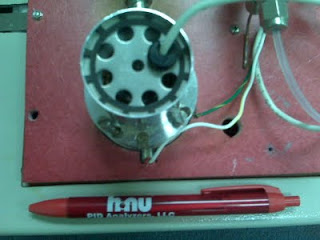We heard it from an industrial hygienist
in Portland, OR
Chlorinated hydrocarbons are a hot topic right now for first responders from fire departments and government agencies such as Homeland Security and Transportation Security Administration.We have been specializing in the measurement of chlorinated hydrocarbons since our development of the 11.7 eV long lifetime photoionization detector lamp in 1979. This lamp is available for the hand-held PIDs and for our portable gas chromatographs. Click here for more information about use of a photoionization based analyzer for the measurement of chlorinated hydrocarbons.
 |
| Web site |
Real-Time Detection Systems: our fast gas chromatograph Model 322 was extremely popular in Portland, OR. Although we introduced the Far-Ultraviolet detector in 1984, it remains underutilized. The most attractive feature of the FUV is that it is nearly universal and is more sensitive than the Thermal Conductivity Detector (TCD). Jack Driscoll and Phil Smith presented research at AIHCE for an industrial hygiene application using the fast GC Model 322 which uses resistively heated columns in the oven and a dual detection method: photoionization detector and a far-UV detector. Click here for more info on this application.
As a member of the American Industrial Hygiene Association's Real-Time Detection System Committee (AIHA RTDSC), Jack Driscoll is co-authoring a book with Phil Smith, Past Chair of the AIHA RTDSC called "Important Instrumentation and Methods for the Detection of Chemicals in the Field". Jack has contracted to contribute the last section of the book on the subject of Infrared Analyzers. He recently completed the Photoionization and Specialized Detectors sections.
Updated May 27, 2014































